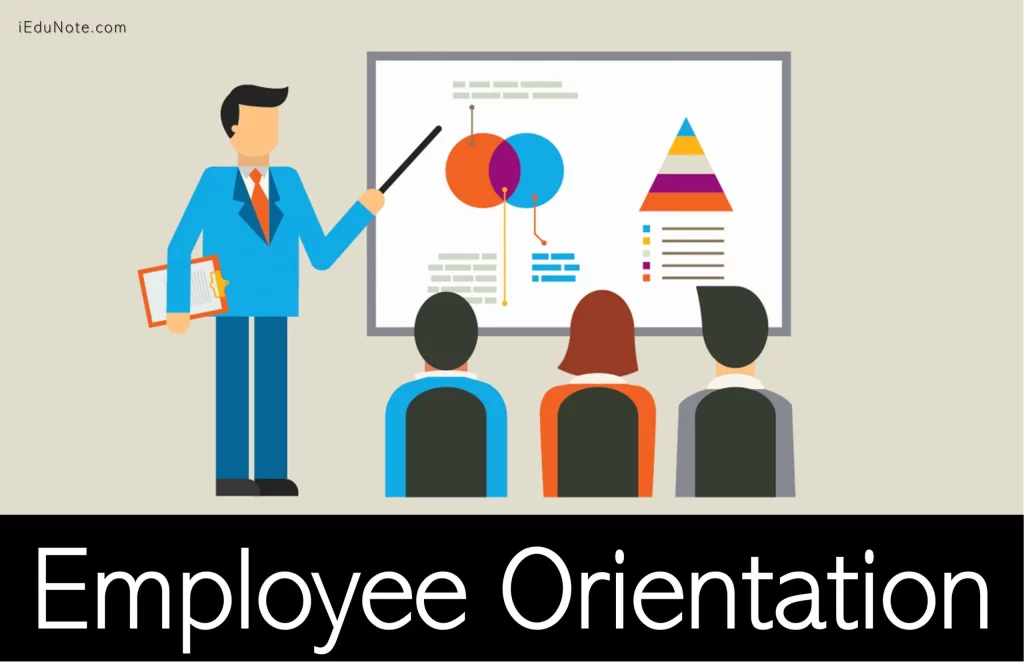What are employee orientation programs?
Employee orientation programs, also known as onboarding programs, are structured processes
designed to introduce new employees to their organizations. These programs aim to familiarize
newcomers with the company’s culture, values, policies, and procedures, and provide them with the
necessary tools and information to succeed in their roles.
Employee orientation programs typically cover a wide range of topics, such as company history,
organizational structure, job expectations, benefits and perks, safety guidelines, and training
opportunities. By offering a comprehensive introduction, these programs help new hires feel
welcomed, supported, and prepared for their new positions, facilitating a smoother transition into
the company, and increasing employee engagement and productivity.
What are the steps involved in employee orientation programs?
The steps involved in employee orientation programs may vary depending on the organization and
its specific requirements, but there are some common steps that are typically followed:
Step 1: Preparing for the Orientation:
- Notify the new employee about the orientation schedule and provide necessary details.
- Gather relevant materials, documents, and resources for the orientation.
Step 2: Welcome and Introduction:
- Greet the new employee and introduce them to key members of the team and organization.
- Provide a warm welcome and create a friendly atmosphere.
Step 3: Company Overview:
- Present an overview of the company’s history, mission, vision, and values.
- Explain the company’s organizational structure, departments, and key personnel.
Step 4: Job Role and Expectations:
- Clearly define the new employee’s job role, responsibilities, and expectations.
- Discuss performance goals, metrics, and evaluation processes.
Step 5: Policies and Procedures:
- Explain the company’s policies, procedures, and guidelines, such as code of conduct, dress code,
and attendance. - Address topics like time-off policies, benefits, and employee resources.
Step 6: Training and Development:
- Provide information about training programs, learning opportunities, and professional
development initiatives. - Introduce any specific training materials, software, or systems relevant to the new employee’s
role.
Step 7: Workplace Safety and Security:
- Review safety protocols, emergency procedures, and any specific safety equipment or training
required. - Discuss security measures, data protection, and confidentiality policies.
Step 8: Team Integration and Networking:
- Facilitate introductions to team members and encourage networking opportunities.
- Foster a sense of belonging and collaboration within the organization.
Step 9: Q&A and Feedback:
- Encourage the new employee to ask questions and provide feedback.
- Address any concerns or queries they may have.
Step 10: Follow-Up and Ongoing Support:
- Provide ongoing support to the new employee after the orientation, ensuring they have the
necessary resources to succeed. - Schedule follow-up meetings or check-ins to address any further questions or concerns.
What are the needs and objectives of employee orientation programs?
Overall, the needs and objectives of employee orientation programs revolve around creating a
smooth transition for new employees, equipping them with the knowledge, skills, and support they
need to succeed, and fostering a positive and engaging work environment.
The key list of needs and objectives of employee orientation programs are listed below. They are
centered around providing a positive and effective onboarding experience for new employees.
- Acclimation to the Organization:
- Need: New employees need to become familiar with the organization’s culture, values, and
overall work environment. - Objective: Help new hires assimilate into the organization’s culture, understand its values, and
feel a sense of belonging.
- Clarification of Roles and Expectations:
- Need: New employees need clarity on their job roles, responsibilities, and performance
expectations. - Objective: Clearly define job expectations, responsibilities, and performance metrics to set new
hires up for success.
- Knowledge of Policies and Procedures:
- Need: New employees need to understand the company’s policies, procedures, and guidelines.
- Objective: Educate new hires about important policies such as code of conduct, ethics, HR
procedures, and any legal or regulatory requirements.
- Training and Skill Development:
- Need: New employees require training and development opportunities to enhance their skills and
knowledge. - Objective: Provide training programs and resources to equip new hires with the necessary skills to
perform their roles effectively.
- Safety and Security Awareness:
- Need: New employees should be aware of safety protocols, emergency procedures, and security
measures. - Objective: Educate new hires about workplace safety, security practices, and any specific safety
requirements related to their role.
- Integration into the Team and Organization:
- Need: New employees need to build relationships, collaborate, and feel connected within the
organization. - Objective: Facilitate introductions, encourage networking, and promote a positive team dynamic
to foster a sense of belonging and engagement.
Next Innovation Asia


